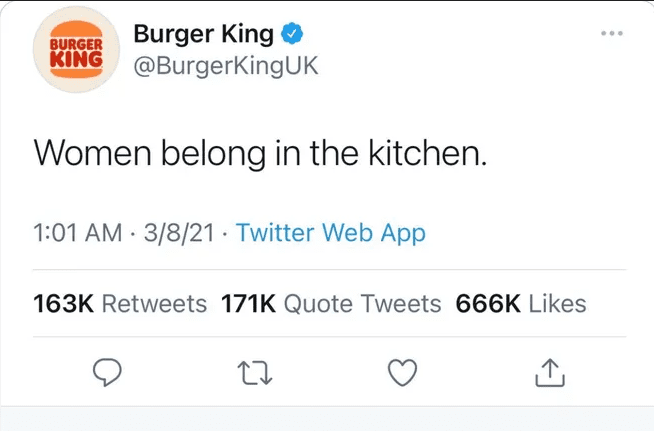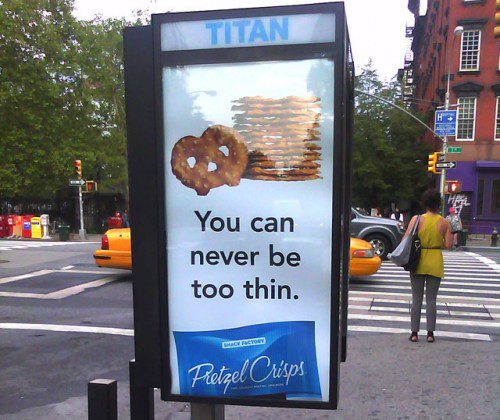When Food Ads Go Wrong: Lessons from the Worst Ads From The Food Industry
Food advertising is tricky business. It is an art that’s meant to tantalize taste buds and draw customers toward the brand. However, not every food ad manages to hit the mark. Disaster happens! Some manage to recover from the disaster and others succumb to it. Looking back at the worst ads from the food industry is one way to avoid these mishaps.

While advertising often feels like a trial-and-error approach, it helps to learn from the mistakes that other brands make. Saves your time and effort. And of course, your valuable marketing budget too!
Therefore, let’s explore the blunders and lessons behind bad food advertising, starting with the potential disasters it can bring.
- Why are bad food ads bad for business?
- 7 worst ads from well-known food brands
- 1. When McDonald’s tried to sell Filet-O-Fish using a “dead dad” sentiment
- 2. When KFC was called out for promoting bad table manners
- 3. Pepsi ad featuring Kendall Jenner
- 4. The controversial Spanish Snickers ad
- 5. Burger King’s controversial Tweet
- 6. The ill-conceived outdoor ad from Pretzel Crisps
- 7. Flora’s insensitive print ad
- Refine your advertising approach with – lessons from these worst ads + a KIMP subscription
Why are bad food ads bad for business?
A slip here and there is imminent. Even for the most renowned businesses with the best marketing teams in the world. Things tend to go wrong once in a while even with the most loved brands in the world. Blame it on bad timing or ambiguous concepts, or even a lack of attention to changes in the market. Whatever the case, bad ads are very bad for business. Here’s why:
- Affect brand image – if you look at the worst ads in the food industry, most of them were due to the ad deviating from the customer’s perception of the brand. This means that bad food advertising can drastically affect brand image. And brand image is an essential yet difficult-to-gauge branding metric.
- Wasted advertising budget – advertising involves expenses, in most cases. A bad ad misses the mark and is therefore wasted budget.
- Loss of credibility – bad food advertising in the form of false claims or misleading ideas significantly affects the credibility of the brand. Consequently, it ends up alienating existing customers.
- Long-term effects – there are brands that have made a strong comeback after their worst ads. But not all brands have this luxury. One bad ad is all it takes to weaken your stance in the industry.
- Losing to competition – all of the above impacts can hit hard if you are in an extra-competitive realm.
Remember that a bad food ad can not only disappoint but also evoke negative emotions such as disgust or mistrust, which can be more profound and lasting than in other industries. Additionally, misleading or inaccurate advertising in the food industry can have health and safety implications. Let’s delve deeper into this by analyzing the worst ads from food brands around the world and the marketing lessons they bring.
7 worst ads from well-known food brands
1. When McDonald’s tried to sell Filet-O-Fish using a “dead dad” sentiment
Adding emotions to your ad is a good thing, an essential too. But the key is to add the right emotions and in the right proportions. Some brands overdo it and end up finding themselves on
the receiving end McDonald’s is one such.
The below ad received a lot of backlash with a lot of people calling it insensitive. The ad featured a young boy who was struggling to find common ground with his deceased father until he discovered that they both loved Filet-O-Fish sandwiches from McDonald’s.
The ad attempted to convey a touching and emotional message, suggesting that the simple act of sharing a particular food item could bring people closer together, even across generations.
However, the ad received widespread criticism and backlash. Many viewers found it highly insensitive and accused McDonald’s of exploiting grief and using a sensitive subject matter for commercial gain.
Eventually, McDonald’s withdrew the ad and issued a statement of apology.
KIMP Tips:
- When addressing sensitive topics such as death and grief, exercise extreme caution.
- When experimenting with new ideas, keep a close watch on customer response. Because a swift response to consumer feedback prevents permanent damage to the brand reputation. McDonald’s decision to pull the ad demonstrates the importance of listening to the audience’s concerns.
2. When KFC was called out for promoting bad table manners
The below ad from KFC was intended to promote the Zinger Crunch Salad. It looks like a harmless ad with a hint of humor. However, it was not received well.
The Advertising Standards Authority reportedly received several complaints about the ad. The reason here was that some parents felt that the ad was promoting bad table manners among children.
KIMP Tips:
- Humor is an excellent emotion to leverage in marketing, a universal one too! However, what appears humorous to one might appear insensitive to another. Hence, tread carefully when using humor as the primary emotion in your ad.
- Pay attention to the cultural norms especially when you are targeting customers from different parts of the world. In Britain, for example, given the significance of table manners, the above KFC ad was perceived as offensive by some parents. But the reaction might not necessarily have been the same in other regions.
3. Pepsi ad featuring Kendall Jenner
The above ad from Pepsi, featuring Kendall Jenner, was designed to send a message of unity and positivity during a protest. On the surface, it aimed to convey a sense of harmony and understanding but it turned out to be one of the worst ads for Pepsi in recent times.
This particular ad sparked significant controversy and backlash. It faced criticism from various quarters. Because many saw the ad as an attempt to trivialize and commodify serious social and political issues for commercial gain.
People expressed their disappointment on Twitter through sarcastic posts and memes.
The controversy surrounding the ad reached such a level that Pepsi decided to pull the commercial from circulation.
KIMP Tips:
- Stay away from tone-deaf advertising.
- In marketing, it’s vital to strike the right balance between creativity and sensitivity. The Pepsi ad serves as a powerful reminder to address sensitive topics with respect in order to avoid unintentional offense and controversy.
4. The controversial Spanish Snickers ad
Yet another example of making it to the worst ads list due to the misuse of humor!
This Snickers ad from Spain received a lot of negative criticism with people calling out the ad for perceived homophobia. Featuring Spanish influencer Aless Gibaja, the ad shows a gay man transforming into a bearded man after a bite of Snickers with the signature brand slogan saying “You’re not yourself when you’re hungry.”.
Some saw the ad as an insult to gay men. A lot of people shared the ad and thrashed the brand on social media. Some even spoke about boycotting the brand for its insensitivity. The brand quickly withdrew the ad and apologized to the public. For a brand of this magnitude, such is the level of impact. Things get worse when you are just starting to build your brand image.
KIMP Tips:
- Humor is a great ingredient in marketing however, you need to consider the potential impact. It is easy to can easily cross a line and offend the audience. Such impact often causes irreversible damage to the brand image.
- When you have a concept for your ad, see if the idea targets a particular group of individuals. In such cases, it helps to understand their collective emotions and then portray them in the most honest and realistic way.
5. Burger King’s controversial Tweet
We live in times when social media posts have a similar impact as a full-fledged commercial aired on TV. The amount of backlash that Burger King received for a simple text Tweet is proof!
The real idea was broken down into multiple Tweets. The next few went on to highlight gender disparity and how the brand was working to change it. However, the statement in the first Tweet raised several eyebrows.
The post went live on International Women’s Day and considering the outrage that followed, the brand went on to take the Tweet down and apologize to the public.
The ad from Burger King did not mean to hurt the sentiments of women. It was to attract attention to a serious concern – gender disparity. However, the problem was that the brand used a clickbait. The first Tweet was meant to evoke immediate response from customers, to motivate them to stop scrolling and listen to what the brand was saying. However, the Tweet’s harsh tone missed the mark.
KIMP Tips:
- Stay away from clickbait in advertising, irrespective of the ad format.
- Sexism is a sensitive topic. So tread carefully and choose your words wisely.
- Social media is a double-edged sword. Pay close attention to what you post because negative virality is bad for brands.
6. The ill-conceived outdoor ad from Pretzel Crisps
Like a short Tweet, even a simple local campaign, like an outdoor ad, can put your brand’s reputation in trouble. Pretzel Crisps’ controversial outdoor ads in NYC are the perfect example.
At first glance, it is a simple ad with clear visuals throwing the spotlight on the product being advertised. So far, so good. However, read the copy and you’ll understand what makes this one of the worst ads in the OOH category.
A copy that was meant to be satirical but several users saw it as an indirect and insensitive promotion of weight loss during times when anorexia is a serious concern. The key descriptor in this ad, “thin” was chosen as a suitable one for the product however, it failed to keep the consumers in the perspective. That’s where the ad failed.
KIMP Tips:
- Sometimes it’s the visual that goes wrong and sometimes it is the copy. Either way, the other does not save the day. Therefore, when you are designing ads for your brand ensure that the visuals and the copy are all on the same page in communicating the intended message.
- In the social media-dominated world, outdoor advertising works both ways. People talk about good ads on social media expanding your ad’s reach. At the same time, people share bad ads online as well. This means that your local ad reaches a larger group of audience and brings your reputation down. So every single ad campaign and every single platform counts!
7. Flora’s insensitive print ad
Flora is a well-known brand recognized for its range of margarine and spreads. A few years ago, the brand encountered a firestorm of criticism for its print ad. Take a look at this controversial ad below which was meant to promote Flora margarine in South Africa:
Text within a bullet shape read, “Uhh Dad I’m Gay” is seen bolting toward a heart made of china. The ad also has the tagline “You need a strong heart today”. The idea draws parallels to the revelation of a child’s sexual orientation with a traumatic and life-threatening event. It not only hurt the sentiments of the LGBTQ+ community but also received backlash from the social media folks who found the ad to be insensitive.
Unilever, the multinational corporation that owns Flora responded that the ad was created by an external ad agency and that there was no formal approval for the ad from the company. It also highlighted its continued support for the LGBTQ+ community to show how the ad deviated from the brand’s ethos.
The ad uses an interesting visual metaphor in order to grab attention and to give people a reason to stick around and observe the ad. That’s a good thing. However, the problem lies in the core message that the visual metaphor communicates.
KIMP Tips:
- The Flora ad comes as a reminder to subject all your campaign concepts to thorough scrutiny. Because you do not want any inadvertent associations with sensitive topics.
- Remember to prioritize inclusivity and respect for diverse communities. Customers do not think twice before abandoning a brand that displays discrimination.
Refine your advertising approach with – lessons from these worst ads + a KIMP subscription
In conclusion, these infamous food ads serve as stark reminders of the pitfalls that await in the world of advertising. From insensitivity to controversial messaging, they offer valuable lessons in what not to do.
Take these lessons with you and remember them when you work on your next ad. This way you will have a strong direction in which to work on your ad concept. Once you have your concept ready, all it takes is the accurate visual execution of your ad. That’s where a KIMP subscription comes in. Unlimited designs and unlimited revisions! So you can revisit your ad any number of times to be sure that it communicates the intended message in the intended manner before you launch your campaign!
Register now for a free 7-day trial.



